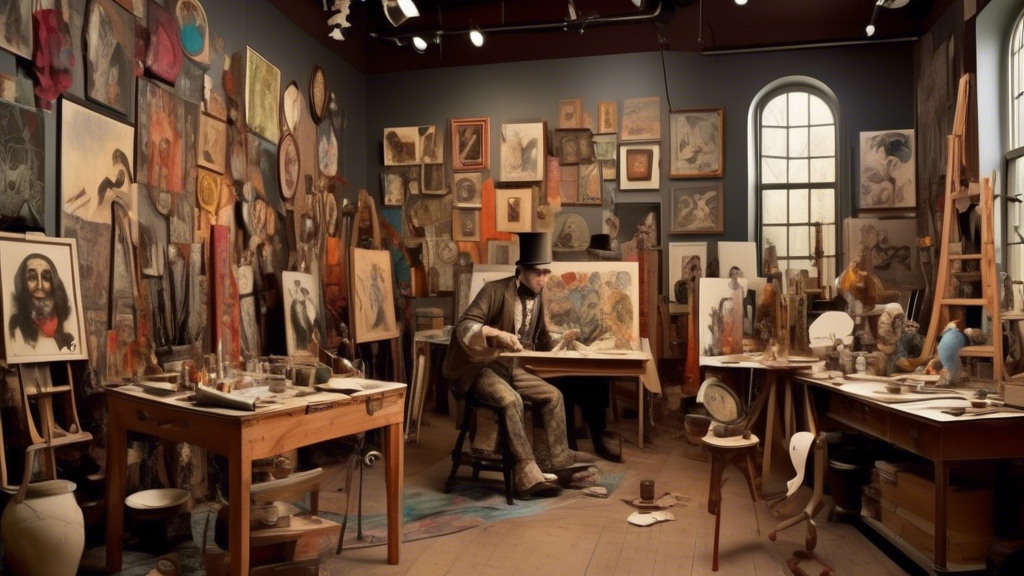Artcore
The 19th century witnessed numerous groundbreaking art movements, each contributing to the evolution of creative expression. Among these was Artcore, a pioneering movement that played a significant role in laying the groundwork for later avant-garde styles, particularly Dada. Artcore, though lesser-known, encapsulated a radical shift in artistic paradigms and its impact resonated through the centuries.
The Origins of Artcore
Artcore emerged in the late 1800s as a reaction to the rigid conventions of academic art. It was marked by a desire to break free from traditional forms and techniques and instead embrace unconventional methods. Its founders were a group of artists and thinkers who believed that art should not merely imitate life but challenge and deconstruct it.
The primary hub for Artcore was in Paris, a city already renowned for its vibrant art scene. Artists such as Henri Dubois, Louise Renaud, and Emile Garnier were some of the prominent figures who advocated for this new, rebellious form of expression. They sought to explore the subconscious, the absurd, and the abstract through their art.
Characteristics of Artcore
Artcore was distinguished by its bold experimentation across various mediums, including painting, sculpture, literature, and performance art. Some of its defining characteristics included:
- Abstract Forms: Moving away from realistic portrayals, Artcore artists used shapes, lines, and colors to convey emotions and concepts.
- Nontraditional Materials: Artcore often incorporated found objects, industrial materials, and everyday items into its works, predating later movements like the readymades of Dada.
- Surreal Imagery: Artists delved into dreamlike and fantastical imagery, breaking the boundaries between reality and imagination.
- Chaos and Disorder: Artcore embraced chaos as a creative force, reflecting the complexity and unpredictability of human experience.
Influences on Artcore
Artcore did not develop in isolation; it was influenced by various contemporary intellectual and cultural trends. The fin-de-siècle period, with its preoccupation with decadence and psychological depth, played a significant role in shaping the movement. Additionally, the burgeoning field of psychology and the works of Freud began to penetrate artistic circles, prompting a deeper exploration of the mind and unconscious desires.
The poetry of the time, particularly Symbolism, with its emphasis on representing the unseen and the ineffable, also inspired Artcore artists to push beyond the visible world. Moreover, the rapid industrialization and modernization of society created a backdrop of disillusionment and conflict, which further fueled the movement’s anti-establishment ethos.
Artcore’s Legacy and Transition to Dada
Although Artcore did not last long as an independent movement, its influence was profound and far-reaching. By the early 20th century, the seeds planted by Artcore had begun to germinate in various avant-garde circles. The Dada movement, which arose in Europe during World War I, can trace a direct lineage back to the principles and innovations of Artcore.
Like Artcore, Dada challenged traditional notions of art and aesthetics, embracing absurdity, irrationality, and anti-art sentiments. Dada artists such as Marcel Duchamp and Tristan Tzara pushed the boundaries further, creating works that questioned the very nature of art and reality. Artcore’s use of readymade objects, abstract forms, and surreal techniques clearly anticipated many of Dada’s key practices.
Is The Core Now Rotten?
While Artcore may not enjoy the same level of recognition as other movements like Impressionism or Cubism, its contributions to the evolution of modern art are undeniable. It provided a crucial conceptual and aesthetic bridge from the 19th-century artistic explorations to the radical outpourings of the early 20th century. By breaking down established conventions and exploring new territories in art, Artcore laid the foundation for the emergence of Dada and subsequently influenced countless other avant-garde movements.


